Chelsea earned a great advantage in the first leg of the UEFA Champions League quarterfinals against Porto, securing a couple of away goals and raising the hopes of qualifying to the next round. After an intense meeting with a lot of activity in front of Chelsea’s goal, they still managed to control the game and take advantage of their opportunities and smartly tilt the scales in their favour.
The Londoners stayed compact and invited the play in their own half but only to smartly lure Porto in and create goalscoring opportunities. They would sometimes fall in their own trap with Dragões always being on the front foot and looking to recover the ball, but a good defensive re-organisation and a strong goalkeeper performance saved them from trouble.
Porto did also struggle with their accuracy and while they created many chances in front of the goal, only four of them were actually on target and threatened Edouard Mendy.
Chelsea followed Real Madrid, Manchester City and PSG with a win and joined the advantage club for the second legs.
This tactical analysis examines what went wrong for Porto in their attacking efforts and how Chelsea had the patience to wait for the perfect opportunities to create chances. We will explain what in both teams’ tactics led to the final result in the Blues’ favour.
Line-ups and formations
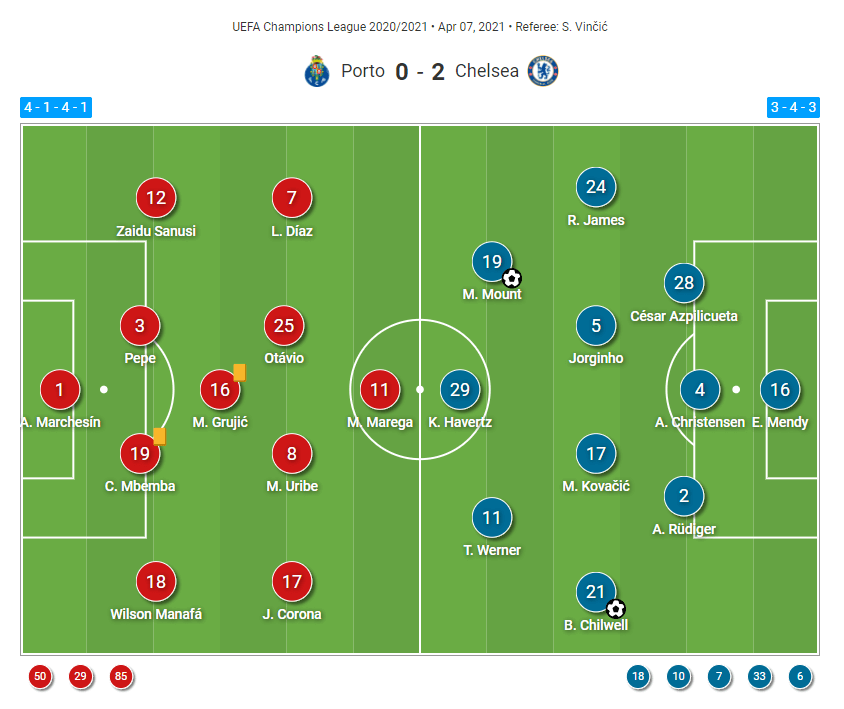
Sérgio Conceição set his team up in a 4-1-4-1 formation keeping their strategy of focusing on the attacking actions and creating as many opportunities as possible. Their goal was covered by Agustín Marchesín while the backline consisted of Zaidu Sanusi, Pepe, Chancel Mbemba and Wilson Manafá. Marko Grujić had a deeper midfield position while supported by Otávio and Mateus Uribe centrally. Luis Díaz and Jesús Corona who didn’t meet the expectations in the game provided width with Moussa Marega operating as a lone striker.
They didn’t have the usual success when attacking through the flanks thanks to Reece James’ and Ben Chilwell’s defensive contribution out wide. That’s why most of Porto’s successful efforts came through the middle.
They were moving well as a defensive unit for the most part of the game trying to press whenever they had the chance, although this was part of Chelsea’s strategy to invite the pressure in their own half and then expose the opposition. The Blues didn’t hesitate to exploit the little gaps in Porto’s defensive structure and focused on keeping the possession for long periods and creating goalscoring opportunities with lower frequency but with higher quality.
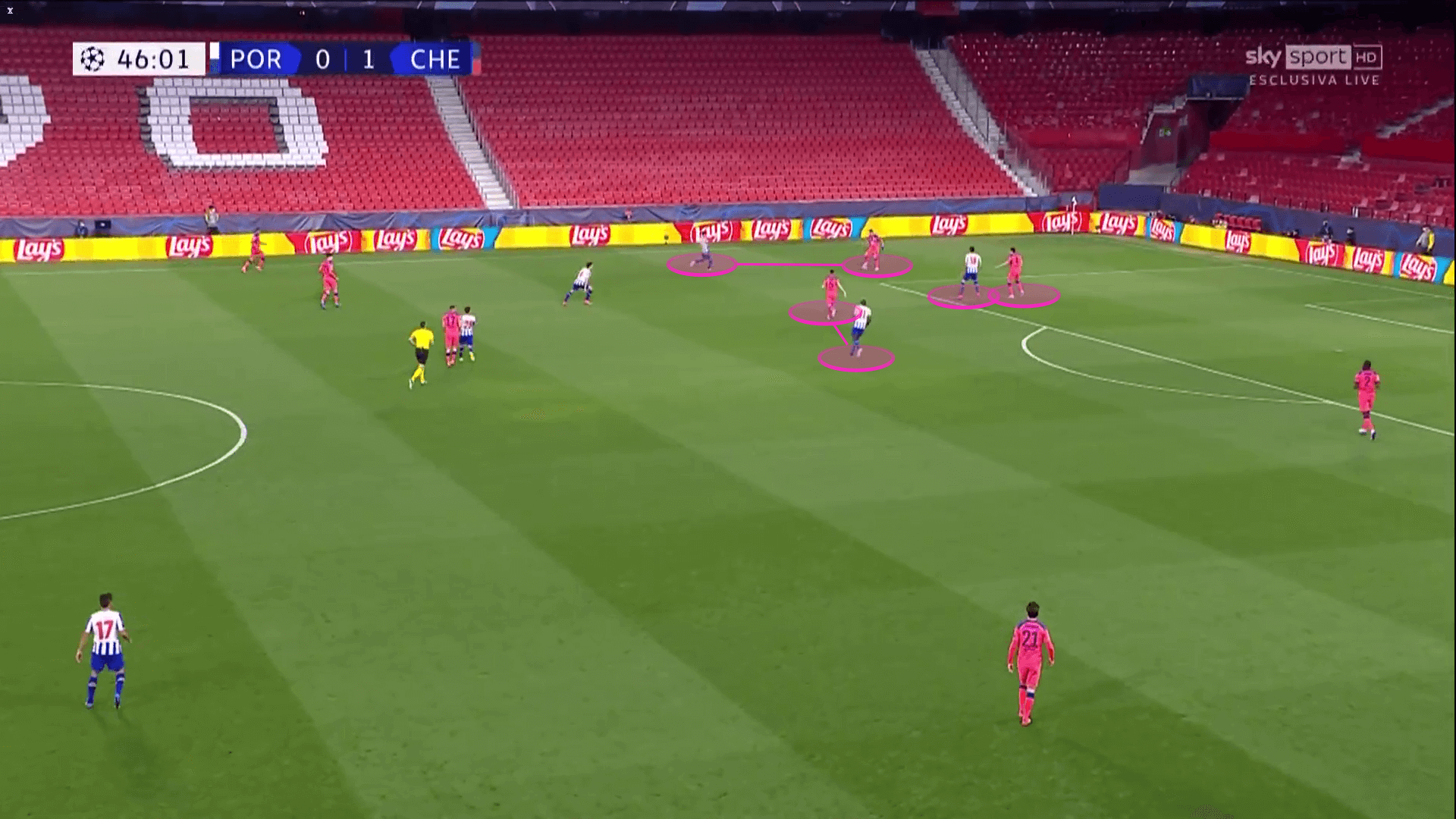
They did that with a back three formation starting with Edouard Mendy on the goal followed by Antonio Rüdiger, Andreas Christensen and the captain César Azpilicueta in defence. While the whole line did a good job of keeping the clean sheet, Azpilicueta’s performance was the highlight at the back helping with ball progression too.
In the central midfield, Jorginho supported the defensive actions well settling in a deeper position than his partner Mateo Kovačić and both contributed well to the team’s build-up and to retaining possession through many different combinations with the defenders.
As mentioned, Chilwell and James covered the flanks where they managed to split their responsibilities well and contributed both defensively and in attack. Surprisingly, the talented forward line which consisted of Timo Werner, Mason Mount and Kai Havertz was the least impressive throughout the game with only the academy player showing glimpses of his potential getting on the end of a nice Jorginho pass and scoring a brilliant opener in the 32nd minute.
Porto’s attacking efforts and Chelsea’s defensive reaction
Although Porto are among the teams with the lowest possession percentage on average in the CL this season, Conceição’s team didn’t stay away from their attacking identity and put a lot of efforts into keeping the ball and attacking Chelsea through different channels. While in their previous games they didn’t have a lot of time on the ball, they reached 44.82% against the Blues which immediately affected their efficiency in attack.
They tried exploiting the wide areas as per usual but soon saw it difficult to break through Chelsea’s wing-backs who were also supported by the centre-backs behind. The Londoners couldn’t avoid the invasion on the flanks but managed to stay well structured and re-organise according to the opposition’s actions. This forced Porto to try penetrating through the central areas.
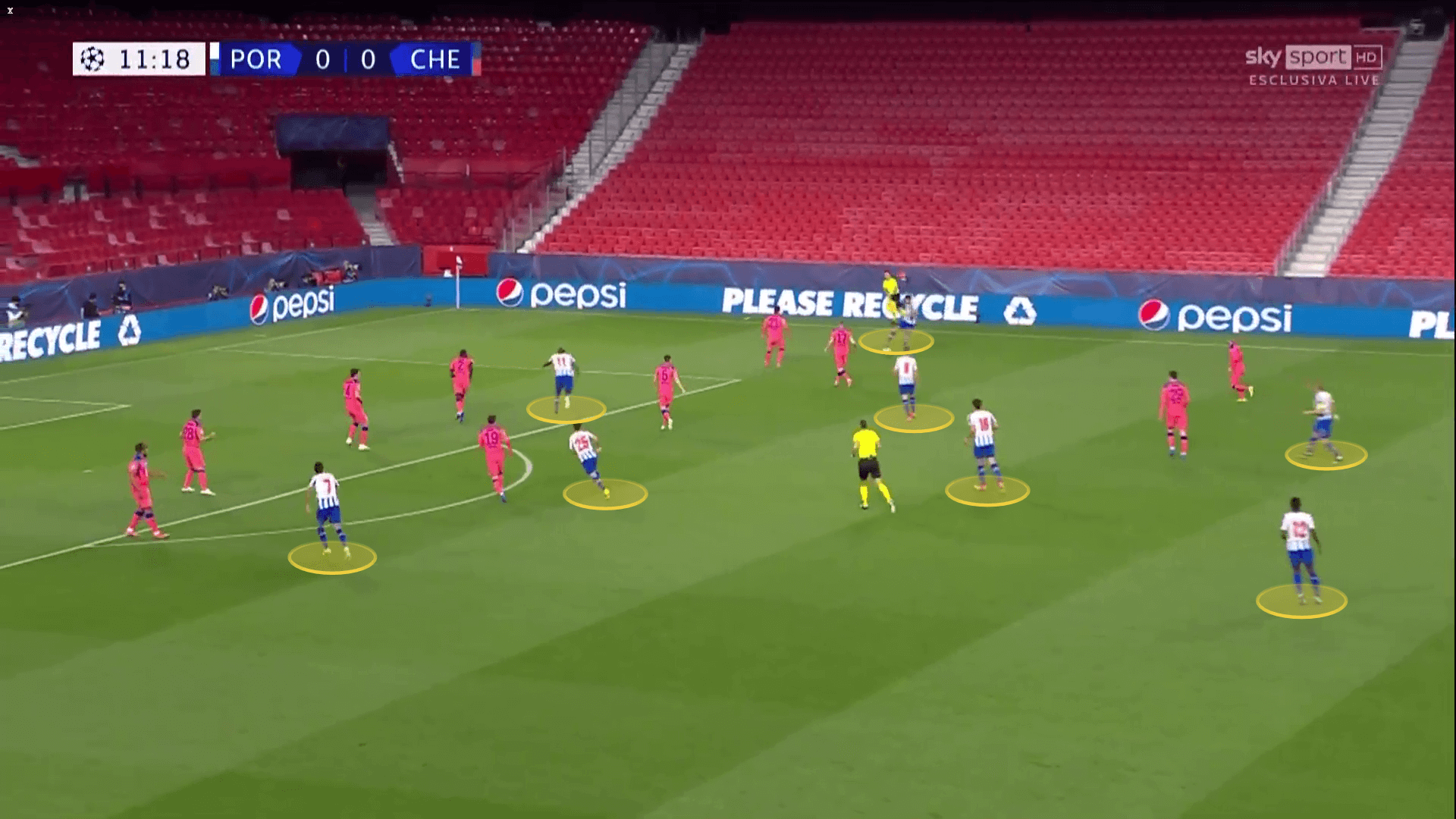
Their defensive awareness combined with Porto’s inaccurate shooting efforts resulted in the Portuguese shooting 13 times with only four of them being on target. This low accuracy cost the team a lot and they failed to convert their chances into goals, despite the few opportunities that Chelsea allowed.
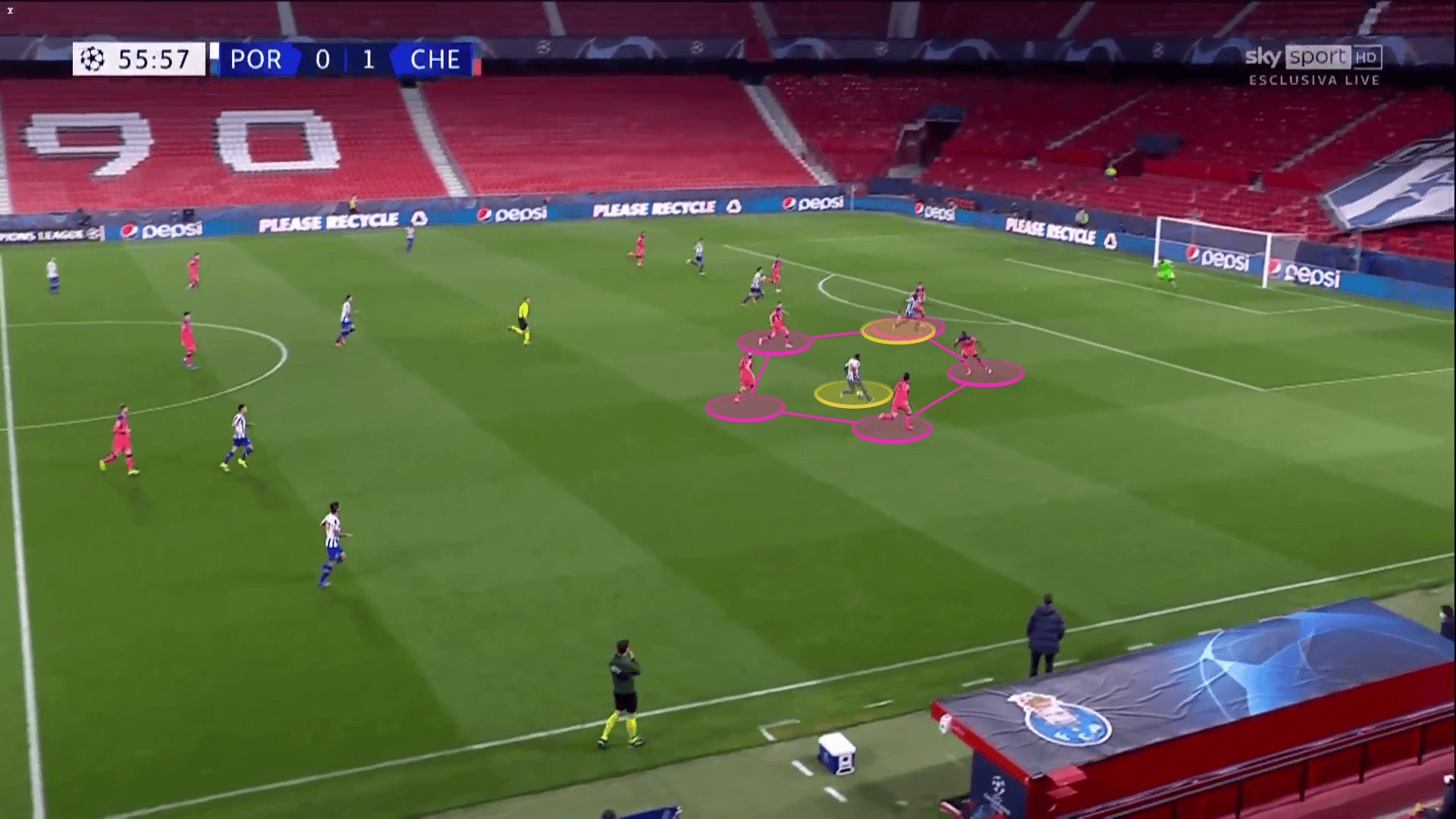
Porto’s distinguished attacking actions resulted in many set-plays (nine corners and four free-kicks) but they weren’t able to take advantage of them. Although they displayed a better aerial performance it wasn’t enough to break through Chelsea’s experienced defensive set up and Mendy’s great saves. Jorginho’s support also turned out crucial for the Blues’ defensive performance.
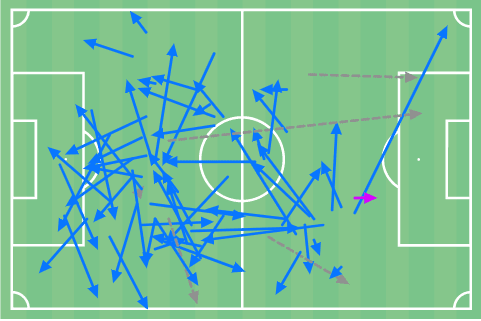
Chelsea’s pressing strategy wasn’t intense throughout the whole game, their PPDA was constantly changing according to Porto’s movement and attacking actions. It was quite low before both of their goals which showed their determination to recover the ball and immediately create chances.
Chelsea’s smart decision to invite the play in their own half
The Londoner’s were aware that Porto would try to expose them in every possible way and had a plan to use that to their advantage. They lured the opposition inviting the pressure into their own half and controlling the game with well-measured defensive actions. In possession, they would circulate the ball between the defenders and the midfielders through one-touch pass combinations retaining possession and dragging players out of position to open the passing lanes and attack.
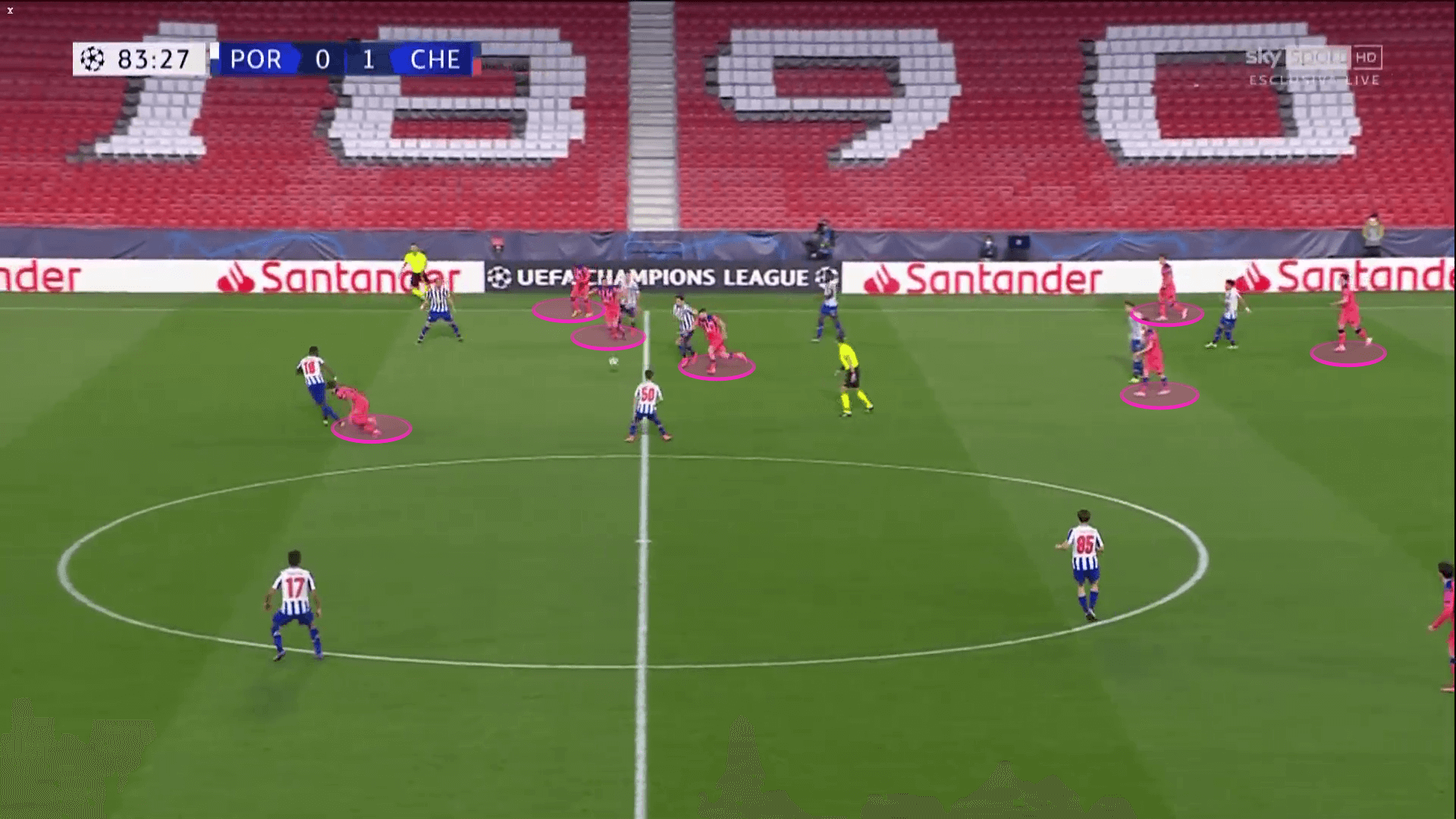
Their patience in attack helped them in waiting for the right moment and producing quality chances. Jorginho’s constant contribution to ball progression was very beneficial for executing their attacking strategy. They stayed compact and the whole team dropped deeper. Their high pass frequency (507 passes) with high pass accuracy allowed them to control the game.
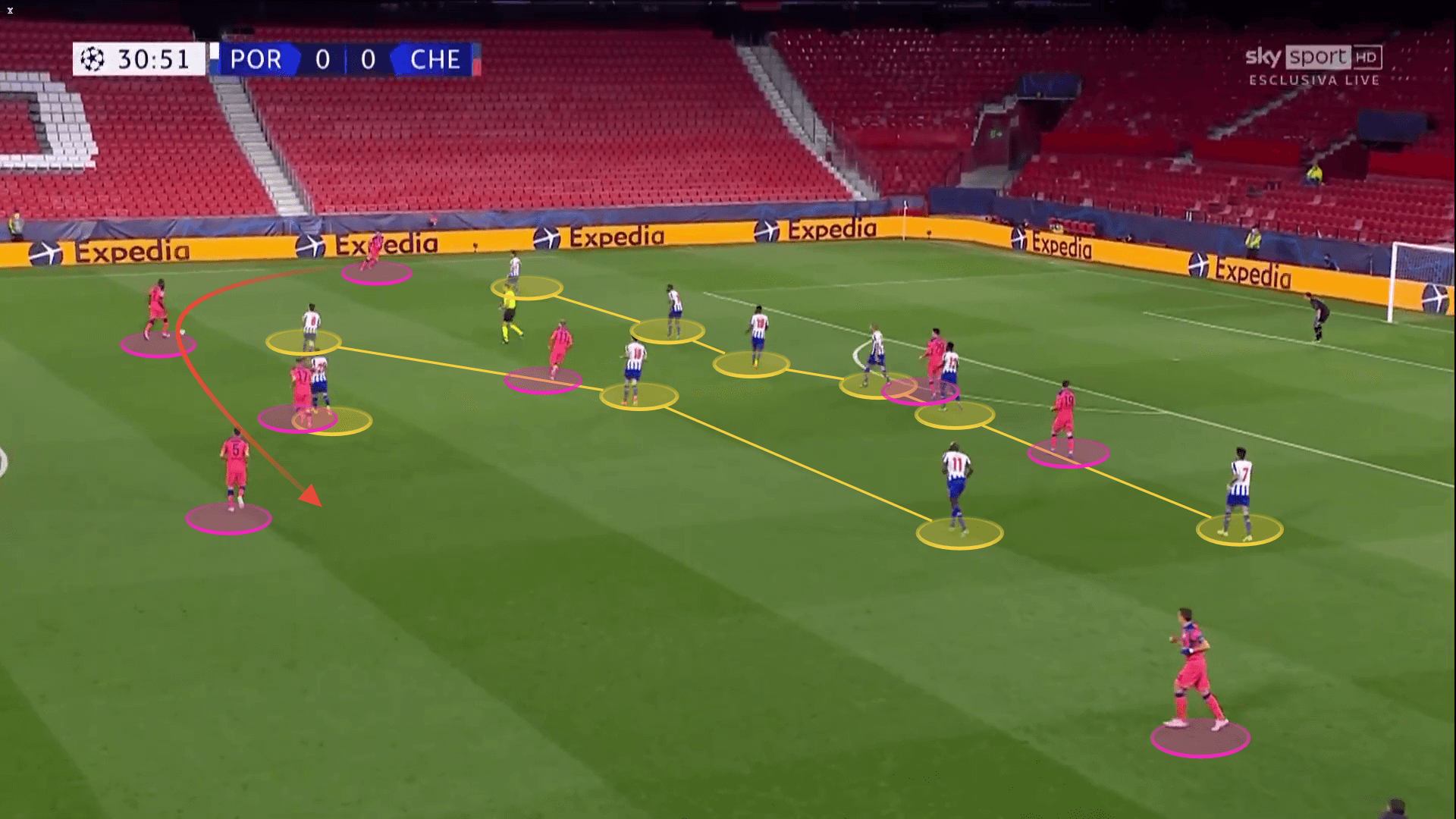
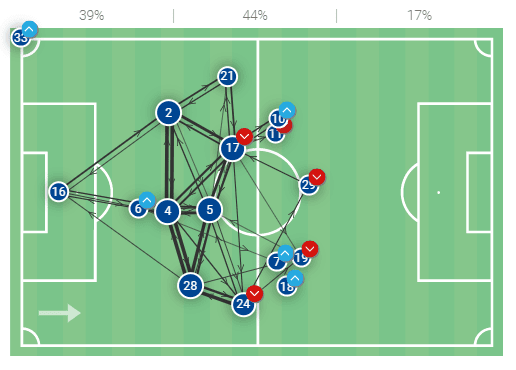
Dragões didn’t leave the ball without a fight though. They constantly tried to recover it, especially in the opposition half trying to trouble their build-up from the back. They made 14 recoveries in the advanced areas but couldn’t take advantage of these chances and score.
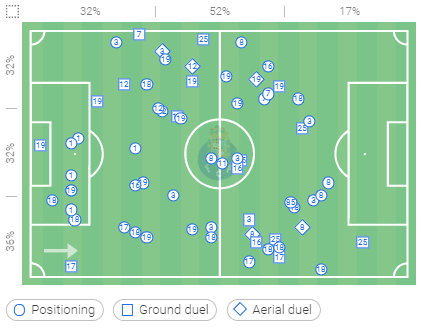
Difference makers
Despite going 0:2 down, Porto had their good performers throughout the game. Their best creator who contributed perfectly well to the ball progression was Otávio. He was moving around the midfield trying to create opportunities for his teammates sending through balls and smart passes to the final third. He contributed well with a few long balls that helped to bypass Chelsea’s press. Grujić on the other side contributed well to the team’s defensive ventures. He was key in the air winning all of his five aerial duels. He supported ball progression too using his dribbling abilities to advance the ball.
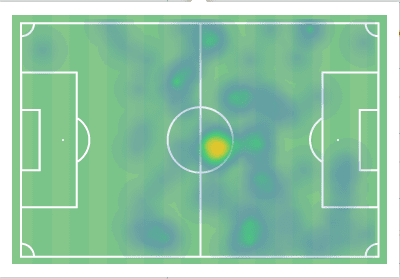
There were a few players that impressed for Chelsea. While Mount, Chilwell and Jorginho were the ones praised for the win, the real hero of the night was the keeper Mendy whose awareness and reactions were crucial for the positive result. Despite Chelsea’s defensive efforts, Porto managed to create some dangerous opportunities where Mendy stepped up and saved the team. He ended up doing five extremely important saves that saw the team with a two-goal advantage going into the second leg. He also supported his team in ball progression, being involved in the build-up and retaining possession in their own half.
Conclusion
As our analysis showed, Chelsea got a comfortable 2-0 win against a tough attack-minded opponent which gives them a great advantage in their second meeting. They should not underestimate Conceição’s players though and should be extremely focused defensively if they want to proceed to the next round having in mind they just knocked out Juventus. Without playing brilliantly and creating many chances, Tuchel’s side won the game with a well-measured performance.






Comments